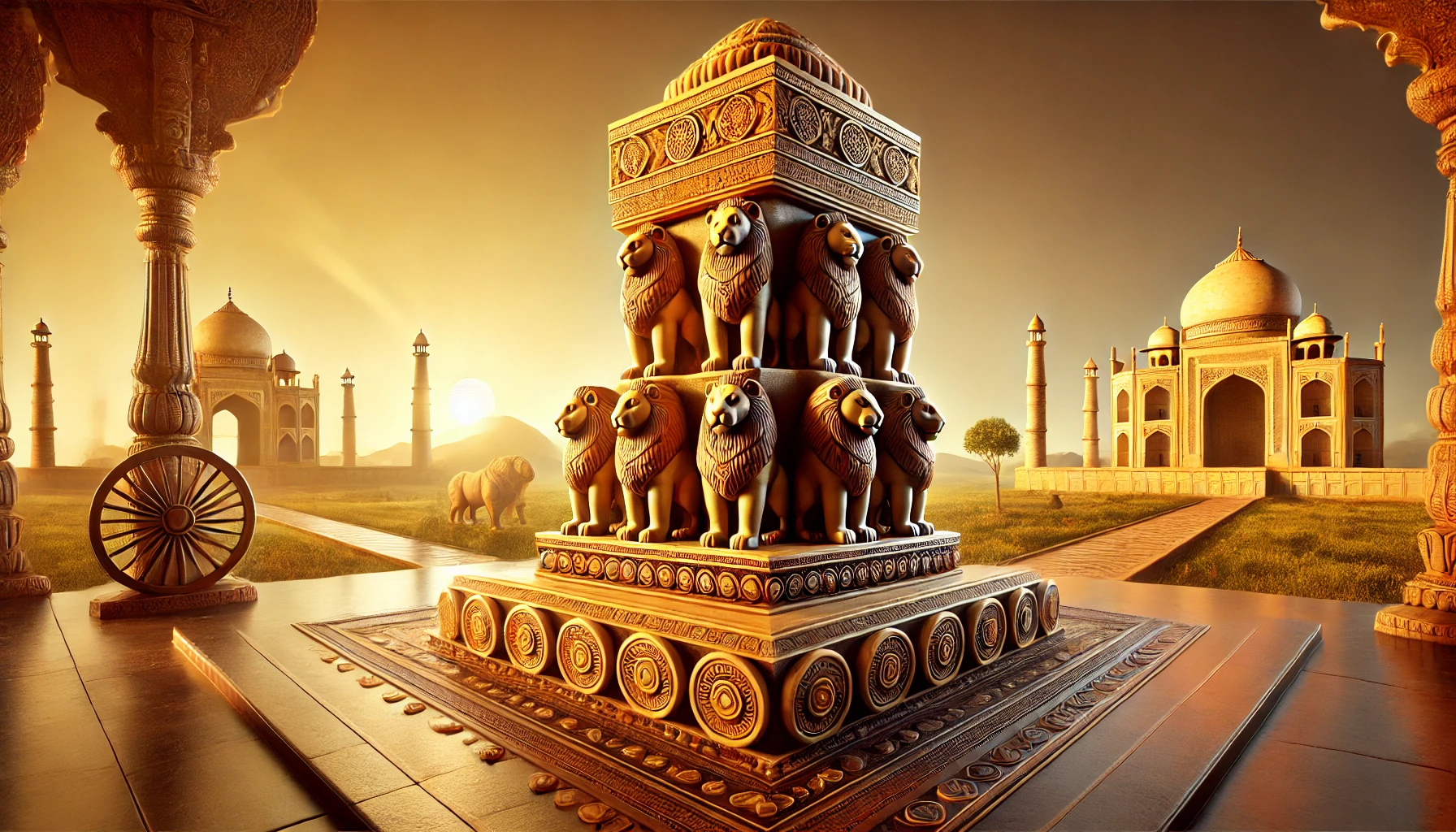Introduction
The Ashok Stambh, or Ashoka Pillar, is one of India’s most iconic historical symbols. This pillar, with its four lions standing back-to-back, represents strength, peace, and the enduring values of ancient India. Recognized as the national emblem of India, it carries deep historical, cultural, and ethical significance. In this post, you’ll find all you need to know about the Ashok Stambh, from its origin and meaning to its place in modern India.
What is the Ashok Stambh?
The Ashok Stambh, or Ashoka Pillar, was originally erected by Emperor Ashoka of the Maurya dynasty in the 3rd century BCE. Made from sandstone and standing at an impressive height, these pillars were spread across his empire as symbols of his reign and his commitment to the teachings of Buddhism. Today, the four-lion pillar is the most recognized, symbolizing the power and unity of India.
The History of Ashok Stambh
Emperor Ashoka, known for his transformation from a fierce ruler to a promoter of peace, built these pillars after converting to Buddhism. The pillars, featuring inscriptions on ethical and moral conduct, were designed to share Ashoka’s beliefs and values with his people. Ashoka’s pillars are spread across India, and some can even be found in neighboring countries, highlighting the extent of his empire.
Structure and Design of the Ashok Stambh
Each Ashoka Pillar has a unique design, but most have a similar structure:
- The Base: The pillars have a smooth, cylindrical base made from polished sandstone.
- The Shaft: A single piece of sandstone forms the shaft, symbolizing unity and stability.
- The Capital: This is the uppermost section, typically adorned with figures of animals like lions, elephants, and bulls. The most famous capital is the Lion Capital, which has four lions standing back-to-back.
The Lion Capital of Sarnath, now the national emblem of India, symbolizes power, courage, and pride. The four lions represent power in four directions: north, east, west, and south.
Significance of the Ashok Stambh in Modern India
The Ashok Stambh is not just a historical artifact; it is a vital part of modern Indian identity. Its four-lion capital has been adopted as the national emblem, symbolizing India’s integrity, strength, and commitment to peace. You’ll see the emblem on Indian currency, government documents, and more. This connection keeps the values of Ashoka alive in contemporary India.
Key Facts About Ashok Stambh
- Builder: Emperor Ashoka of the Maurya dynasty.
- Purpose: Spread the teachings of Buddhism and promote moral conduct.
- Material: Sandstone, polished to a high shine.
- Inscriptions: Many pillars contain inscriptions written in the ancient Brahmi script, often describing moral and ethical teachings.
Where Can You See an Ashok Stambh Today?
The most famous Ashok Stambh is in Sarnath, Uttar Pradesh, where the four-lion capital is displayed in the Sarnath Museum. Other pillars are found across India in locations like Vaishali (Bihar), Delhi, and Rampurva (Bihar). Each site has unique historical significance, and the pillars there reflect different aspects of Ashoka’s legacy.
Lessons from Ashok Stambh
- Unity in Diversity: Just as the four lions face four different directions, India is united with diverse cultures and languages.
- Commitment to Peace: The Ashok Stambh represents Ashoka’s dedication to peace after years of warfare.
- Moral Conduct: The inscriptions on the pillars encourage moral and ethical behavior, which are values that continue to guide India.
Fun Facts
- Symbol of National Pride: Adopted as India’s national emblem in 1950.
- UNESCO Heritage: The Ashoka Pillar at Sanchi is a UNESCO World Heritage site.
- Inspiration for Indian Flag Design: The Ashoka Chakra, or wheel, on the Indian flag, is inspired by the Dharma Chakra found on Ashoka’s pillars.
Conclusion
The Ashok Stambh stands as a powerful reminder of India’s rich heritage and its values of peace, unity, and ethical conduct. Through its adoption as a national symbol, it continues to inspire and unite Indians. Learning about the Ashok Stambh is not just a journey through history but an exploration of the ideals that have shaped modern India.
